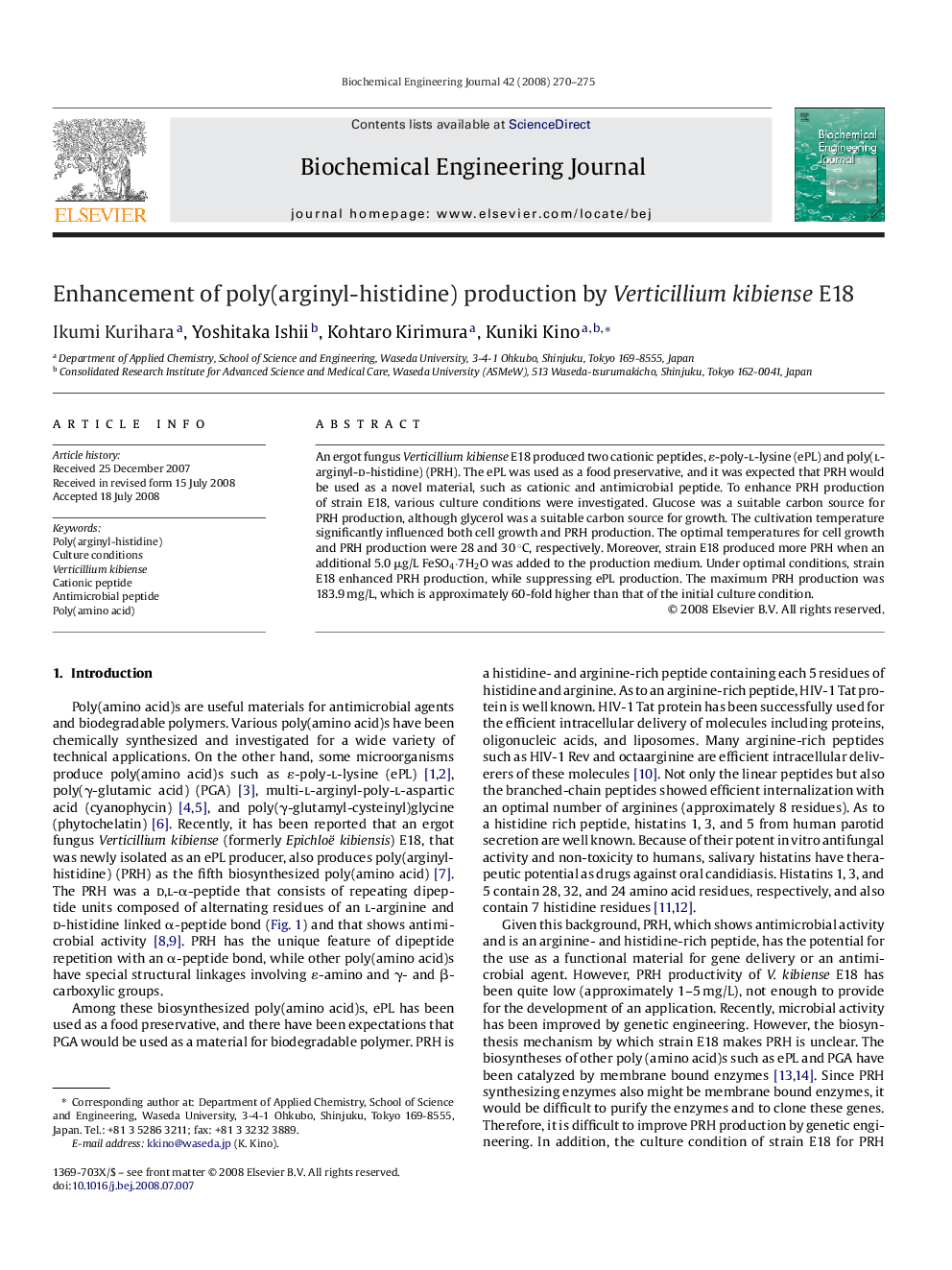| Article ID | Journal | Published Year | Pages | File Type |
|---|---|---|---|---|
| 4336 | Biochemical Engineering Journal | 2008 | 6 Pages |
An ergot fungus Verticillium kibiense E18 produced two cationic peptides, ɛ-poly-l-lysine (ePL) and poly(l-arginyl-d-histidine) (PRH). The ePL was used as a food preservative, and it was expected that PRH would be used as a novel material, such as cationic and antimicrobial peptide. To enhance PRH production of strain E18, various culture conditions were investigated. Glucose was a suitable carbon source for PRH production, although glycerol was a suitable carbon source for growth. The cultivation temperature significantly influenced both cell growth and PRH production. The optimal temperatures for cell growth and PRH production were 28 and 30 °C, respectively. Moreover, strain E18 produced more PRH when an additional 5.0 μg/L FeSO4·7H2O was added to the production medium. Under optimal conditions, strain E18 enhanced PRH production, while suppressing ePL production. The maximum PRH production was 183.9 mg/L, which is approximately 60-fold higher than that of the initial culture condition.
